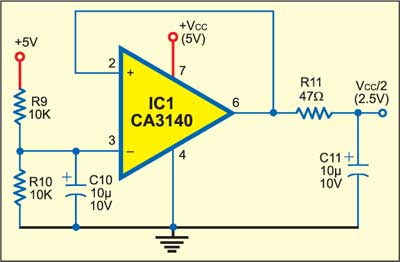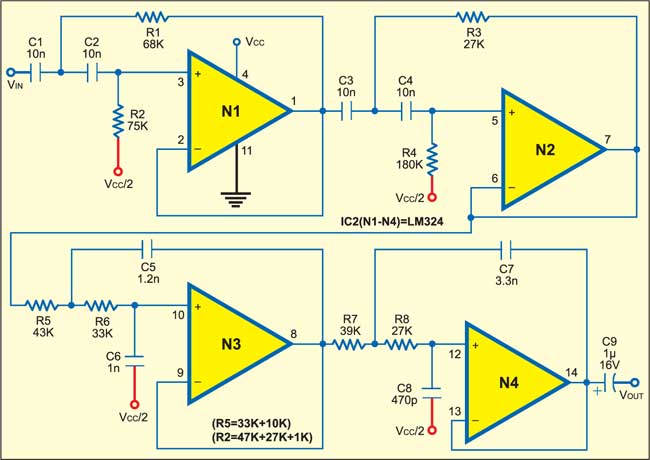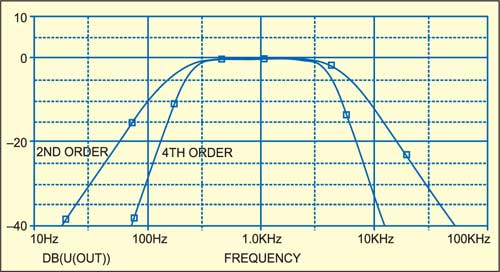 Human speech generally occupies an audio spectrum of 300 to 3400 Hz. There is a requirement, especially in telephone circuits, to limit the frequency response to this range. The ‘Digital Speech Security System’ published in EFY Electronics Projects Vol. 19 also uses a similar filter. However, it uses dedicated filter ICs, which, besides being costly, are not easily available. This circuit will prove quite useful for not only the mentioned project but various other speech circuits.
Human speech generally occupies an audio spectrum of 300 to 3400 Hz. There is a requirement, especially in telephone circuits, to limit the frequency response to this range. The ‘Digital Speech Security System’ published in EFY Electronics Projects Vol. 19 also uses a similar filter. However, it uses dedicated filter ICs, which, besides being costly, are not easily available. This circuit will prove quite useful for not only the mentioned project but various other speech circuits.

A fourth-order filter capable of accepting an audio input signal of up to ± 2.5V amplitude can be built using two ICs, one of which would be a quad op-amp such as LM324, while the other may be a single op-amp CA3130/CA3140 or dual op-amp LM358 operating off a single supply of 5V as Vcc. A stable voltage of Vcc/2 (i.e., 2.5V) is derived using a unity-gain voltage-follower circuit shown in Fig. 1, which is biased at half the supply voltage developed across R2. Capacitor C1 is used for bypassing any ripple in the supply voltage, while C2 bypasses ripples in the output of the op-amp. The Vcc/2 voltage is connected to corresponding points in Fig. 2.

The filter circuits at the input of op-amps make use of standard capacitor and 5% tolerance resistor values. Although component variations do slightly affect the operation of the circuit, but that will be almost imperceptible.
In the response curve of the filter (see Fig. 3), the 50/60Hz rejection of the fourth-order filter is greater than 40 dB, while that of the second-order filter is about 15 dB. The filter has been designed with a 0.5dB roll-off at 300 Hz and 3 kHz.
The filter response has been satisfactorily tested at EFY Lab.








